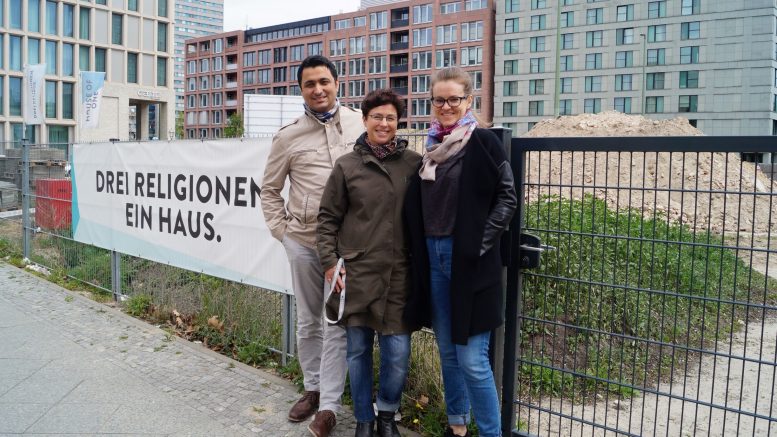Kristin Bohner is Christian and admits certain envy every time she sees Muslims prostrate themselves on a rug to pray, without using a bank. Cagatay Caliskan is Muslim and admires the wealth of traditions Jews have. Esther Hirsch is Jewish and recognizes that she did not know all the things that Jews and Muslims had in common.
All three of them live in Berlin. They are part of a team that is working to build the first great sacred place that will host three religions and all the others which want to take part, welcoming atheists or agnostics as well. The doors of ‘House of One‘ will be wide open to everyone.
>>> Follow Salam Plan- ‘journalism against hate’ on Twitter and Facebook<<<
“Every time I go to church, I think: ‘go back to the mosque,’ because I do not like church benches at all. It just seems super nice to sit on a rug, or lie down. I have already gone to mosques in which I have rested and in the church I find that it is often cold,” exemplifies Bohner, one of the pedagogical leaders of the House of One Foundation.
Her colleague Caliskan says: “Now I am studying the different schools of thoughts and traditions among the Jews, and the more you dig, the more comes out. I will prepare myself a scheme to have an overall perspective, but this wealth of traditions simply impresses me a lot“.
“Of course it is another religion and another tradition, but I understand it very well and I feel very close”
— Esther Hirsch
Hirsch, who belongs to the team of theologians responsible for the project, admits: “I can recognize very much of Judaism in Islam, in its thoughts, in the type of prayers … Of course it is another religion and another tradition, but I understand it very well and I feel very close,” admits Hirsch. She adds: “And about the Christians, I was surprised, because I thought I knew them very well, because I live here, in Germany, and there are more Christians than any other. But I also got to really know them thanks to the dialogue [between us]. And it seems very nice to me how they shape their community, how it’s a lot about doing things together and being together more than the theological aspect.”
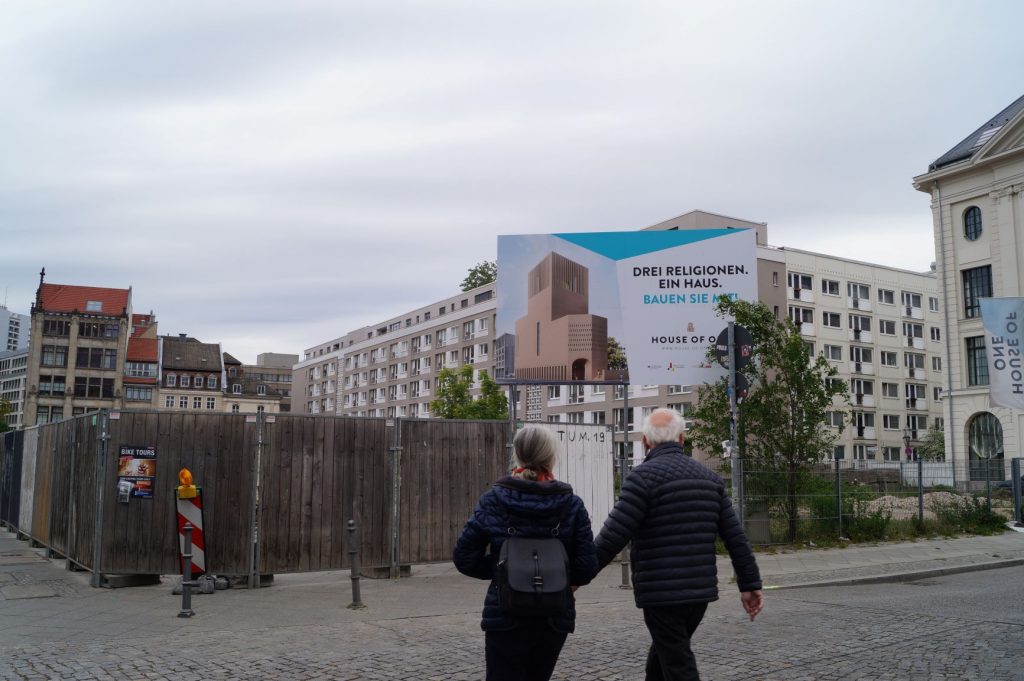
The foundation stone of House of One will be laid in April 2020 in Petriplatz, Berlin. © Salam Plan
Three temples united for a better co-existence
At House of One there will be a synagogue, a mosque and a church under the same roof, although in different rooms. They will be connected by a central hall to share celebrations, prayers, exhibitions, concerts and -above all, exchange ideas and get to know each other better. There will also be space for a café, a library, meeting rooms …
A 138-feet high tower will allow visitors – despite its discreet height – to have a panoramic view of downtown Berlin. And, if plans do not change, they will even be able to observe each one of the temples from above, since the ceilings will be glazed so that natural light illuminates the rooms completely.
“Light is something that unites the three religions, but also the meeting, a place to meet. [It is about] individual parishes being able to meet, but also having a meeting place in the center for everyone,” Bohner explains. “It is important that from the outside it is not recognizable whether it is a mosque, a church or a synagogue, so that we focus on what really matters: opening paths to the other,” adds Caliskan, who is also the pedagogical head of the plan. Another essential part of the project is that each sacred room will be open to visitors of other beliefs or without them, says Hirsch.
“It is important that from the outside it is not recognizable whether it is a mosque, a church or a synagogue, so that we focus on what really matters: opening paths to the other”
— Cagatay Caliskan
The project is being planned to the smallest detail of the building. Within each of the religions which were mentioned, there are different branches or schools of thoughts and there can be no issue left unresolved, because the aim is that everyone can feel at home while they coexist with people who do not think the same in some aspects.
Thus, for example, the mizbeaj (altar) of the synagogue will have to be movable, since for Jews it must have one or another location according to which school they belong to. In some cases they celebrate the prayer with the altar in the center of the room; in others, they need it next to the wall … Or in the case of Jews and Muslims, some prefer the prayer without separation between the gender and others need separated spaces. Or Protestants avoid religious images and decoration in their churches, while Catholics do prefer to celebrate their rites and faith with them.
There is so much detail to think about, that they keep on thinking about some details of the building. In fact, it was just recently when it was decided that the building would not have side windows, but that all the natural light would enter from the top. The last change in the architectural project has been to incorporate an independent access for women’s prayer in the mosque, as there are people who prefer it that way within the Muslim community, Caliskan explains.
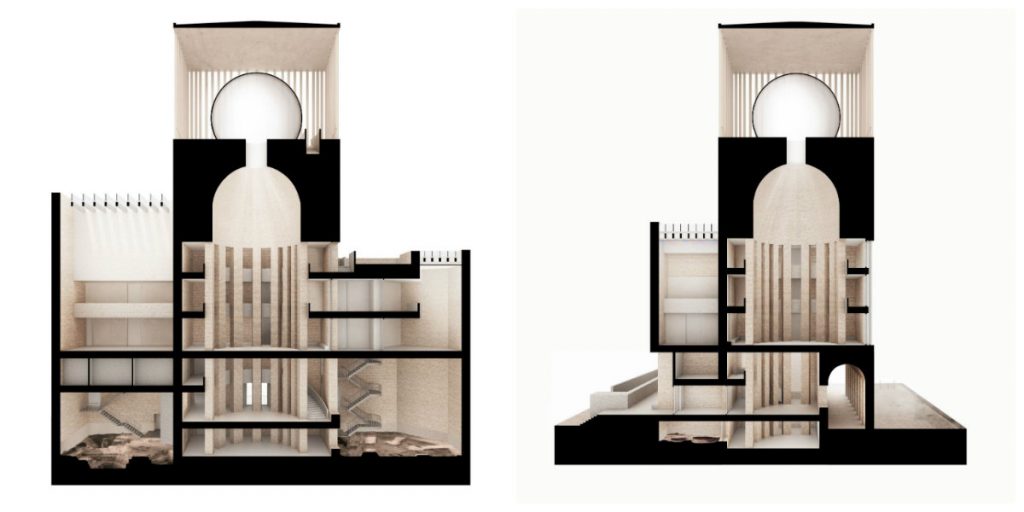
This is how House of One will look like from the inside. © KuehnMalvezzi
Every option is respected
Every option is respected. And it is not easy to reflect that in a building. The Kuehn Malvezzi studio, which won the tender for its construction, works hand in hand with representatives of the interreligious foundation so that they do not miss anything. And they have no choice but to re-plan the building often or add aspects that had not previously been taken into account.
The foundation stone will not be laid until April 2020, but the building plot was already put at their disposal by the Berlin Administration more than ten years ago. It is not just another building site of the many that remain free in the heart of the city, which is still architecturally recovering from the post-war period and the fall of the Wall that separated the Germans.
Now, in the Petriplatz, very close to the emblematic television tower of the city, you can see the foundations of a church demolished by the GDR, on which that communist regime built a parking lot. The little ruin that was hidden underground belongs to the umpteenth reconstruction of the first church that appears in the historical documents of Berlin, when the city was getting born in the Middle Ages. When the regional Administration found these foundations on public land, it asked a nearby parish what they wanted to do with that place, since it had belonged to the church in the past.
“Actually, we have enough churches. We want to do something new. The social structure of Berlin has changed a lot: we have to involve other religions”
“Actually, we have enough churches. We want to do something new (…). The social structure of Berlin has changed a lot: we have to involve other religions,” they replied. And they looked for partners without even knowing exactly what to do with that piece of land at first. It was not the big institutions, but small parishes or movements that ended up coming together and devised a project of coexistence in peace that now takes shape. The ruins of the last church which was built on this spot will also be visible to everyone visiting the House of One.
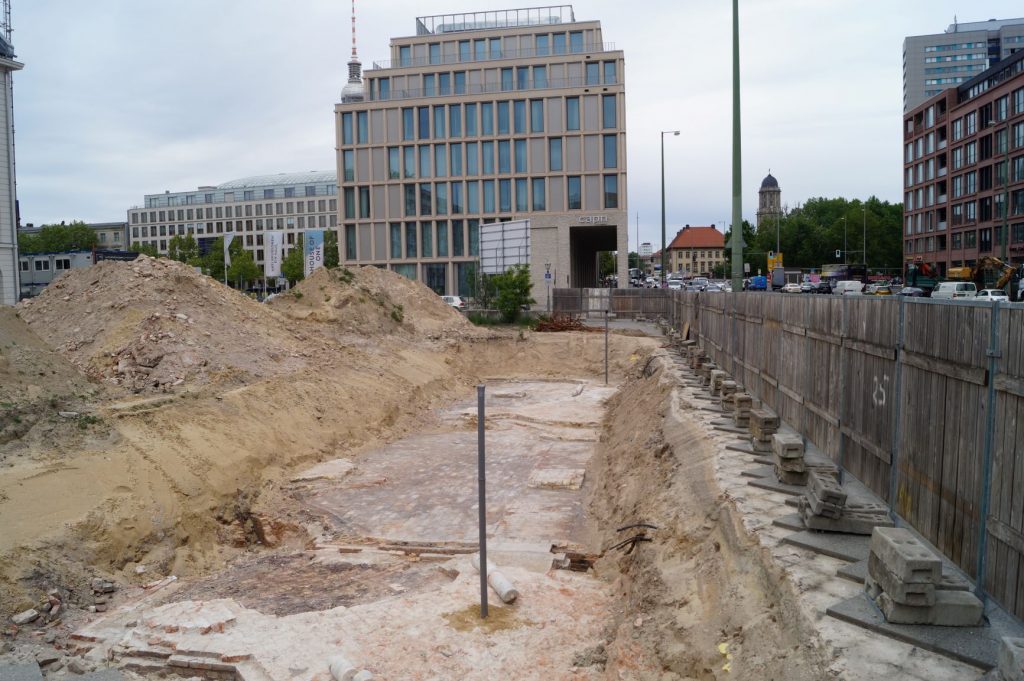
Foundation ruins of the last church erected on the building site, near the TV tower. © Salam Plan
Antisemitism has risen 20% in Germany
This week the German Ministry of the Interior has published crime statistics related to political motivations. They include hate crimes and show that anti-Semitic crimes have amounted to almost 20%, with 1,800 registered cases. Islamophobia receded slightly, going from 1,075 crimes in 2017 to 910 in 2018. Christians in Germany have also been attacked for their beliefs, although in a much smaller proportion: 121 crimes registered in 2018 and 129 the previous year. These last two types of hate crimes are being measured since 2017.
Have they suffered any threat at House of One for their project? Nothing remarkable beyond some comments on social media, Caliskan says. His colleague Esther Hirsch acknowledges that the majority of hate messages are motivated, because the Muslim partner of the project is Forum Dialog, which belongs to the Hizmet movement, better known by the name of its leader, Fetthullah Gülen.
Since the attempted coup d’état against Erdogan in Turkey in 2016, his Government launched a persecution of all those Turkish citizens belonging to the movement or sympathizers of Gülen, as he considers them responsible for the attempt and has put them on the watch list of terrorists. These accusations -which in only a few cases have been brought to trial- meant the expulsion of thousands of judges, lawyers, professors and other professionals from their public positions. Turkey admits that it has kicked out 15,000 people, while Amnesty International assures there were 130,000 people, based on their requests to return to their job, according to Europa Press news agency.
House of One stays out of what it defines as a “political problem”. On the other hand, the project began long before that failed coup d’état. For the time being, it is the only bigger controversy that shadows them and they do not believe that their interreligious parish will generate rejection in the majority of the population. They consider that the more open they are to welcome everyone, the better they the acceptance will be and the better this place will work as a meeting space for people from different backgrounds.
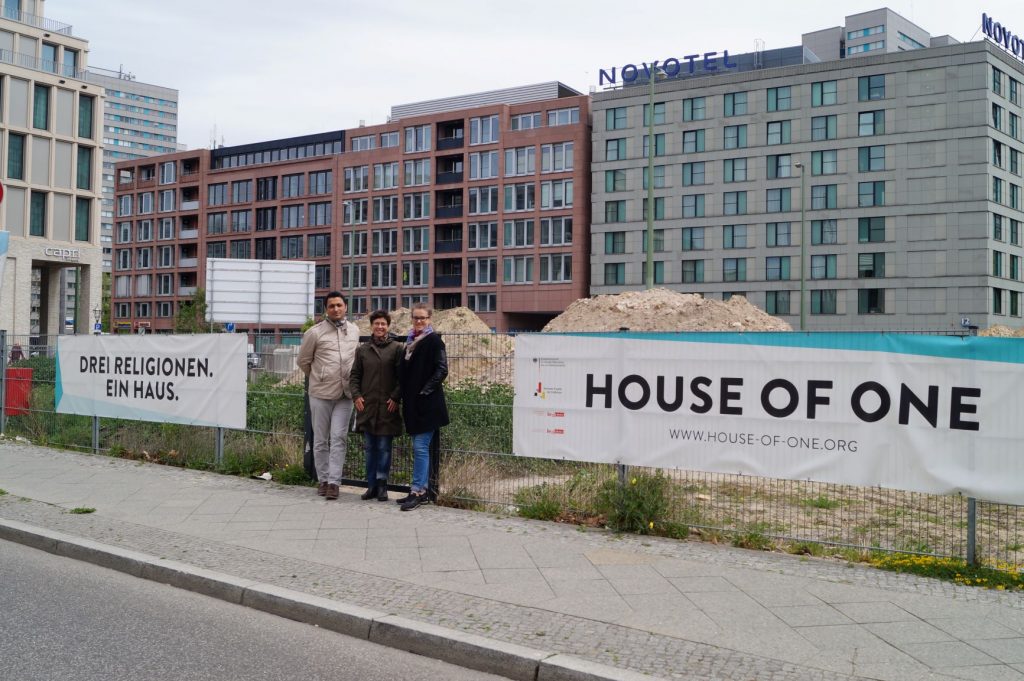
Three spokespersons of the three religions working together to build House of one, before the building plot. © Salam Plan
Thanks to crowdfunding and subsidies
For now, they have collected almost 10 million euros only through private donors from all over the world – “really”, says Hirsch-, without accepting large donations from institutions or organizations. The latter ones have been rejected to maintain the neutrality of the project.
Another 10 million have been given by the Berlin region and 10 more have been obtained from the State. With another 10 million more, which they hope to get through more small donations, it will be enough to complete the project. And they take it for granted, that they will get the money they still need.
While they look forward to the laying of the foundation stone, with a countdown included on their website, they already promote their work for a peaceful coexistence from some nearby offices and another additional headquarters. Among other things, they receive student visits or organize common celebrations; the next one being a “common prayer for peace and religious freedom”, as reflected in article 4 of the German Constitution, now 70 years-old. It will be next Tuesday, 21st of May, at 5PM (for more details, click here). This time it will be in a church, but events vary and sometimes they happen in a library or in a mosque or anywhere they leave at their disposal.
House of One is not a project for Berlin, not even for the Germans. It is a project designed for people from all around the world. And surely, not only Berliners will be curious about it, but also the growing number of tourists visiting the German capital every year. In 2018 they broke their record, with 13.5 million visitors.
For the moment, those who want to have a look at Petriplatz will be able to observe the foundations of that church inherited from Berlin’s first days. But in a few years – they do not dare to commit themselves to a specific number – an ambitious interreligious parish will change the skyline of central Berlin.

